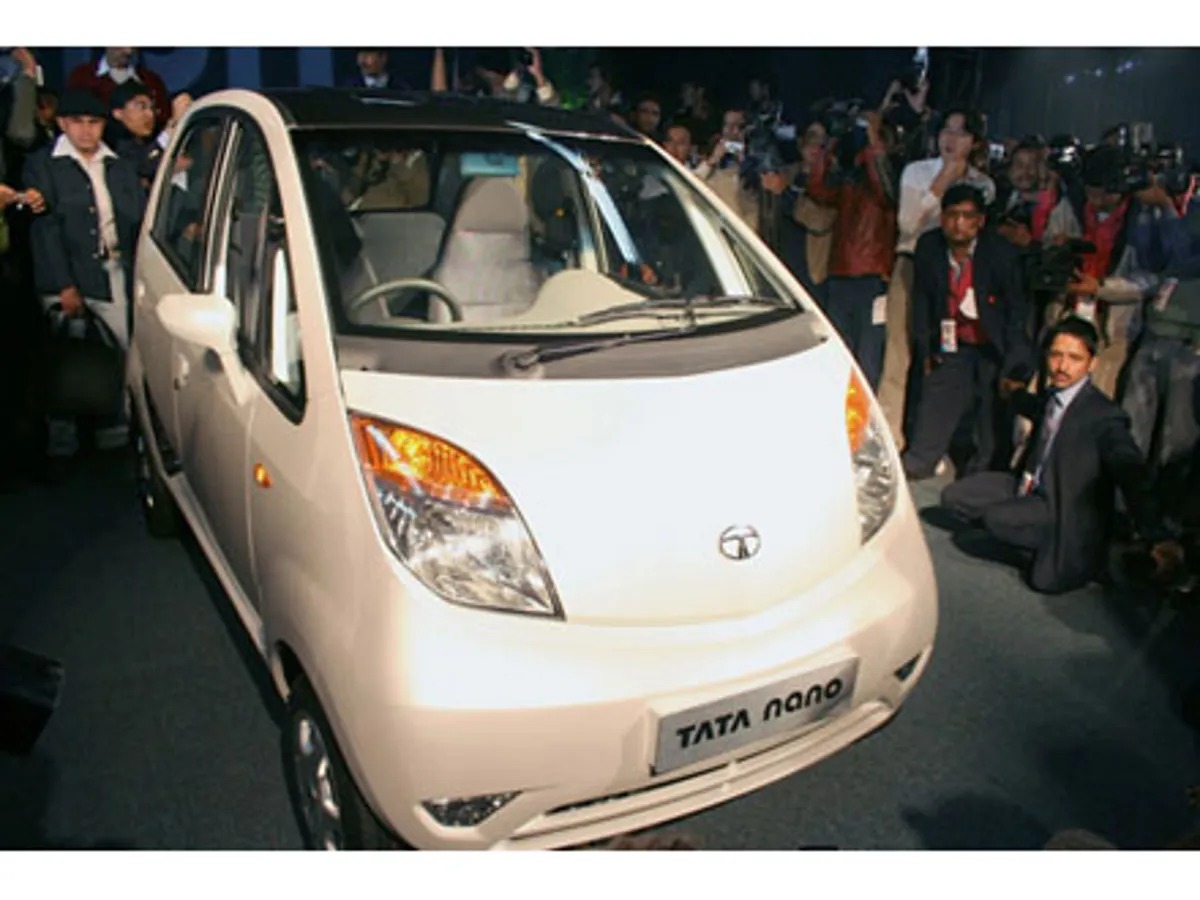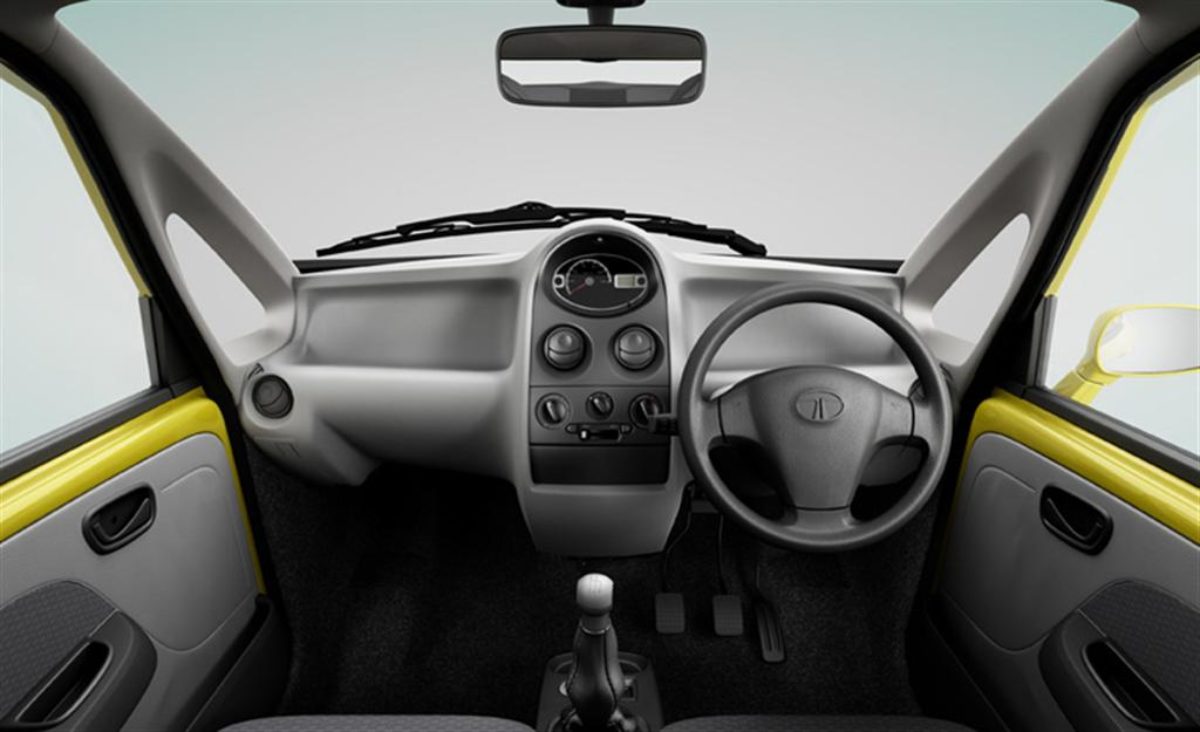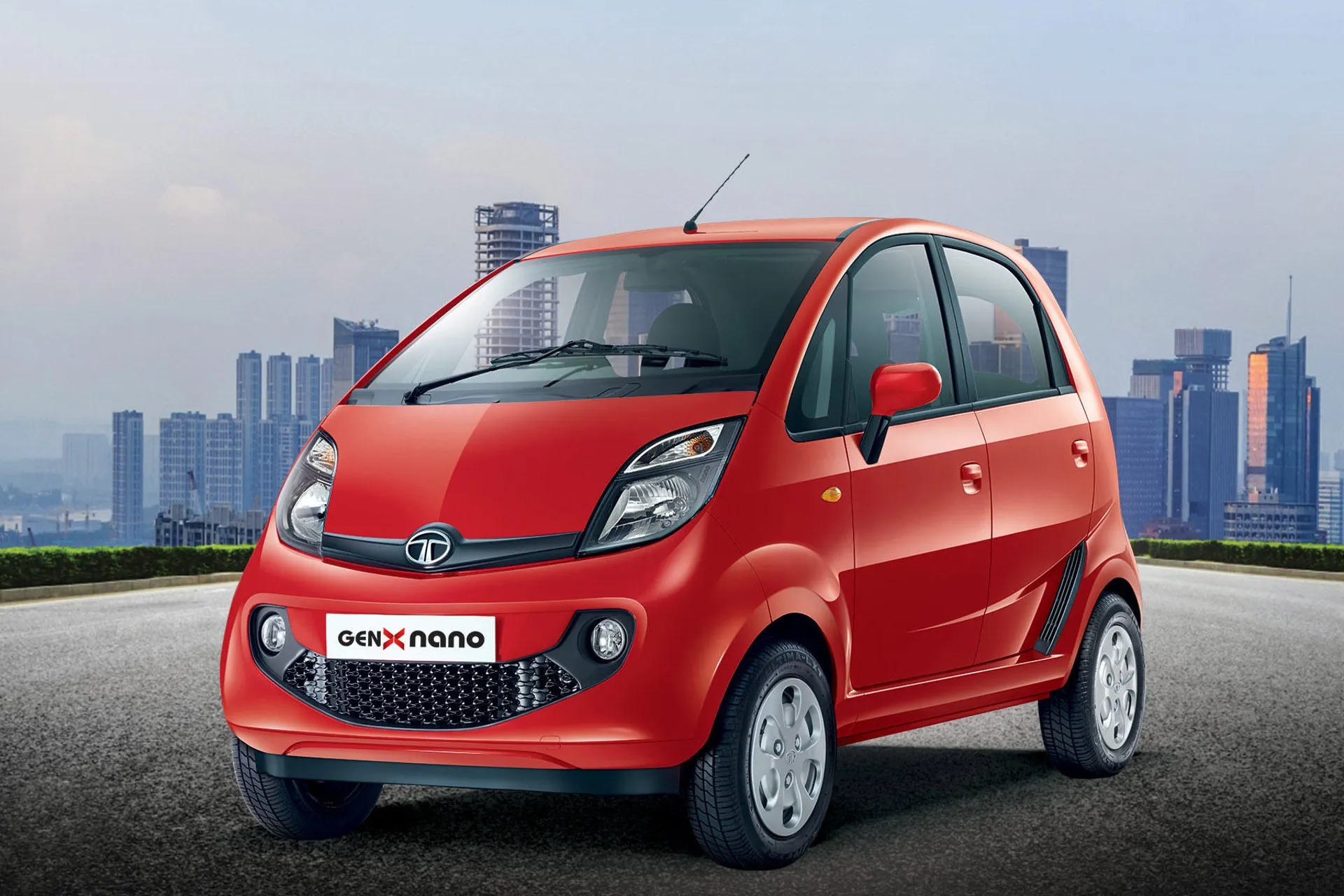17 years have passed and the press release that stirred up on February 5, 2007 still exists on Tata Motors website on February 5, 2024. Titled “Air Powered Car Engine,” the press release revealed a historic direction that the largest car manufacturer in India had laid out only to fail.
At that time, Tata was vigorously developing a small urban car with a super-efficient engine that had the potential to persuade millions of Indians to switch from motorcycles to cars. To achieve that, this car was expected to cost 100,000 rupees – about 41.25 million Vietnamese dong based on the exchange rate at the beginning of 2008.

The Tata Nano once carried the hope of owning a four-wheeler for tens of millions of Indians but ended up being a full-fledged failure project. Photo: Road and Track
Furthermore, Tata also wanted to equip the Nano with an air-powered engine. Economical and clean, but extremely difficult to manufacture, could this puzzle piece fit into the desired model of being the world’s cheapest car at the time?
While the eyes of car users in Europe, North America, and other regions in Asia focused on India, the heat of this car model truly exploded in its home field.
At the Auto Expo 2008 in New Delhi where the Nano made its debut, there had never been and probably never would be a car model that attracted so much attention. The space around the car was almost never empty even though Tata Motors’ exhibition area was the largest in the expo. Reporters crowded in from all directions had to stand on the pickup truck display in another area to take photos.

The area around Tata Nano at Auto Expo 2008 was always packed with spectators. Photo: CNET
Hundreds of thousands of Indians flocked to the exhibition just to see Tata Nano with their own eyes. The whole country of India, even those who had never cared about cars, followed the story revolving around this car model.
A decade before the day Tata Nano was launched, an F1 engine developer Guy Negre founded MDI – the unit in charge of developing a compressed air engine for Tata Nano later on. The working mechanism of this engine is not too complicated, it is compressed air released from the tank, decompressed, and then pushed the piston/steering shaft/wheel. This process does not emit environmentally harmful emissions and compressed air is also easy to produce.
However, saying is always easier than doing. The technical challenges of bringing a compressed air engine into mass production at an acceptable price point were not easy at all. Firstly, the compressed air tank must be extremely strong and durable to ensure safety. This factor has the potential to significantly push up the car’s selling price.

The shocking low price along with the super-efficient air-powered engine makes Tata Nano, not any other car model, the hottest car in 2008. Photo: Tata
In addition, the production stage of compressed air is also a problem. How to produce a large amount of compressed air on a wide scale and store it efficiently is a difficult problem to solve. Not to mention, compressed air production also requires another source of energy, whether it be fossil fuel or electricity.
At the time Tata Nano was launched, electric vehicle technology for the public was extremely rudimentary. For example, a model sold in India by Reva Electric at that time had a range of 150 km and a selling price three times higher.
In July 2008, when the hype around Tata Nano cooled down, the reputable American newspaper New York Times published an interview with Guy Negre. He revealed the compressed air engine, in the desired optimal state, could travel 200 km with a fuel cost of only $3 (50,000 dong at that time).

The interior is simple and just enough for a four-wheeler model with a price of just a few tens of million dong at that time. Photo: Tata
At that time in India, Tata encountered unexpected troubles. They were unable to build a factory in the desired location in West Bengal in eastern India. The intense opposition of local residents who did not want to leave forced Tata to move the factory over 1,600 km to the west. This change caused the entire planned supply chain of Tata to collapse.
Even when the factory was operational, Tata also faced countless challenges. They kept their initial promise to sell Nano at a price of 100,000 rupees, however, the cost of production and the price of materials increased, making the car’s price triple before 2010. Furthermore, several recalls for car repairs and some unexplained car fires also gradually eroded consumer confidence in Nano.

After a few years of struggling, Tata Nano officially ceased production in 2018. Photo: CNET
As a result, even in India, Tata Nano has never reached the desired annual sales of 100,000 units. The planned air-powered engine version was later removed from the product lineup as well.
In mid-February 2024, Tata Nano’s last press release finally disappeared. All data about this forgettable car model at Tata has also been completely “destroyed”. The Indian conglomerate also completely ignores any interview requests or requests for information about Nano. This probably marks the disappearance of the biggest car fever in the world in 2008, forever.





































